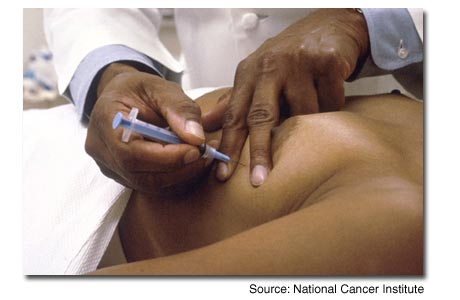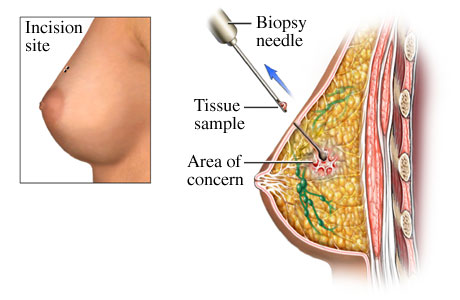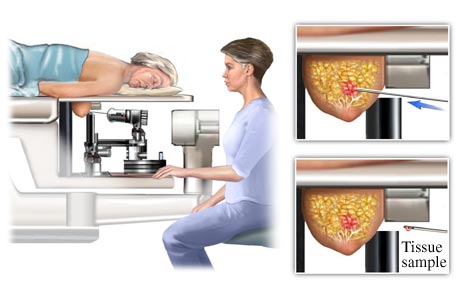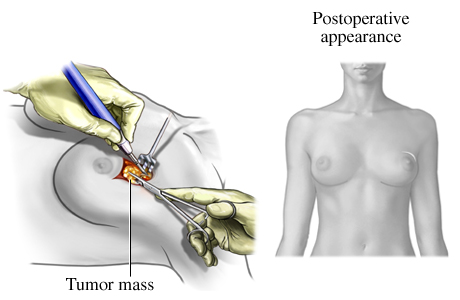Caution -- if you are squeamish -- don't look at the snaps -- heck, don't even read this!
So, this is what you may experience after the follow up mammogram...or hopefully not...!This is a very good site, at WebMD, with information that seems to be objective.
There are different types of biopsies that the Surgeon chooses from after a consult -- I guess that's why I don't go directly to the radiologist and have it done ASAP, but to the surgeon first. This site also shows snaps along with general information, which is a mixed blessing -- but methinks I'd rather know than not know?!? We'll see. They also offer a nice "set of questions" to pose to your surgeon:
Medical test information
Print this page and fill in the information for blood, urine, X-ray, or any other test your health professional recommends. You may need to make copies if more than one test is recommended.
General questions
What is the name of the test?
Why is this test needed? What might happen if the test is delayed or not done? How accurate is the test? Are there other tests that are more accurate? Questions to ask about the test What should be done to prepare for the test? --------------------------- Where will the test be done? How long does this test take? How will you feel during the test? Is it painful? What are the risks? --------------------------- What will the results show? Will the results change treatment? No _ Yes _ If yes, explain: What can affect the results (for example, food, exercise, medication, alcohol, or smoking)? --------------------------- When will the results be available? Date you will receive a phone call from health professional: Date for a follow-up appointment: _ After the test, what will be the next step? Will other tests be needed? Reminder: * Ask about brochures or other information about the test.
* State any concerns you have about the test.
My understanding of what they planned to do, was to have an ultrasound for the "cyst" they found, and a biopsy for the "calcification" they see -- but maybe they'll do an ultrasound on both. They also mentioned that they would most likely do the stereotactic biopsy -- but things change, and the surgeon wasn't consulted yet. -- Below are pictures of the types of biopsies they reference --
Fine Needle Biopsy

Core Needle Biopsy

Stereotactic Biopsy

Open Breast Biopsy
And, there are the RISKS...:
Risks There is a slight chance of developing an infection in the area where the biopsy was done. If an infection occurs, it can usually be treated easily with antibiotics. If general anesthesia is used, there is a small risk of death from the complications of the anesthesia. An open biopsy may cause a blood blister to develop where the incision was made. Core needle and stereotactic breast biopsies may leave a small round scar; open biopsies leave a small straight line scar. The scar usually fades and becomes less noticeable 6 to 12 months after the operation. A fine-needle biopsy usually does not cause a scar. Scarring of the breast tissue from an open biopsy can interfere with the results of future mammograms. This can be avoided by using the stereotactic biopsy method. Because a needle biopsy collects tissue from such a small area, there is a chance that a cancerous growth may be missed. This is called a sampling error.
There will be more reportage, or venting, or ranting, or blithering as needed . One thing I must comment on is the COURAGE that all the women before me have shown, and how I ADMIRE them and their RESOLVE and ATTITUDE(s). Moi? I'm frightened into my very own shell, found under a rock where the uglies hide, and I don't even have a final diagnosis..., yet there are so many women, and some are women I know personally, that have proven to be amazing, resilient , courageous souls and (unknown to them) my mentors and inspirations (and, truth be known, at times people who shame me by their bravery). ##
|

